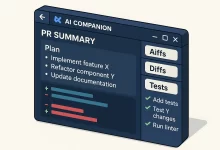I nearly spilled my morning coffee when I read that AI spending by the world’s tech giants is set to top a staggering $344 billion this year. As someone who tracks these numbers for a living, I can’t remember a more aggressive capex push—ever. From Microsoft and Amazon to Alphabet, Meta, and even Apple, every player is racing to build the fastest chips, the largest data centers, and the smartest AI platforms. Let me walk you through why this matters—and how it might reshape our digital future.
Record-Breaking Budgets
Bloomberg’s latest report lays it out: Microsoft plans to ramp its capital expenditures from $24.2 billion last quarter to more than $30 billion this quarter alone. Amazon has already doubled its cloud capex to $31.4 billion year-over-year. Alphabet raised its guidance to $85 billion for 2025, and Meta quietly bumped its own forecast after splurging $14.3 billion on Scale AI. Even Apple—typically conservative—has poured over $9.5 billion into AI-related infrastructure so far. When you add it all up, you get that eye-popping $344 billion figure.
Why All the Hype?
Since ChatGPT’s launch in late 2022, generative AI has gone from novelty to necessity. Enterprises want custom LLMs for customer support, code generation, and personalized marketing. Hardware costs alone—high-end GPUs priced between $30,000 and $40,000—can blow budgets. Then there’s energy: AI compute is an electricity guzzler. I chatted with a data-center ops lead who told me their latest 50 MW buildout ran utility bills north of $50 million per year. But the bet is simple: better AI drives new services and revenue streams, so overspending now feels safer than underinvesting.
Winners and Losers
Not every company is reaping equal returns. Amazon Web Services struggled to convert its massive AI capex into margins this past quarter, dragging its stock down 8%. By contrast, Microsoft and Google Cloud saw healthy upticks as clients locked in AI compute credits. And then there’s Nvidia, whose GPU sales are being driven by this very AI spending spree. Their quarterly revenues are projected to hit $24 billion—nearly triple what they were two years ago.
Economic Ripple Effects
This isn’t just a tech story. According to The Washington Post, the top four spenders’ combined AI budgets could lift U.S. GDP by roughly 0.7 percent in 2025. That’s millions of dollars flowing into chip fabrication, power-plant upgrades, and construction jobs. I spoke with a local recruiter who’s seeing a surge in demand for data-center engineers and AI-ops specialists. If you’ve got those skills, the phone’s been ringing off the hook.
Environmental Trade-Offs
Of course, there’s a flip side. Those new data centers are energy hogs, often relying on carbon-intensive power sources. Organizations like the NRDC are warning that unchecked AI spending could blow through corporate sustainability targets. Some companies are pledging 100 percent renewable power for new builds, but that adds another layer of cost—and complexity—to an already massive investment cycle.
Looking Ahead
The question now is whether this level of AI spending is sustainable. Bloomberg Intelligence predicts annual AI capex could top $500 billion by the early 2030s. Meanwhile, startups and research labs are lining up for GPU block time, pushing demand even higher. If chip shortages or tighter regulations emerge, we could see a reckoning—yet most CEOs seem to agree: it’s better to be over-prepared than left in the AI dust.
For me, watching these numbers climb has been a whirlwind. I remember when a few hundred million dollars were considered big AI bets. Now we’re talking hundreds of billions. As I close my laptop and get back to work, one thing’s clear: wherever you stand on AI, its spending footprint is only going to get bigger—and harder to ignore.

 FoxDoo Technology
FoxDoo Technology







